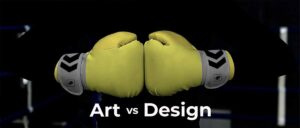Product design, where innovation is the driving force, understanding the end user has emerged as the cornerstone of success. This article explores the profound impact of user-centric design on product development and outlines why it should be the focal point of any design process.

The Essence of User-Centric Product Design
To begin the process of understanding the end user, it is necessary to first understand the essence of user-centric design. This method centers on putting the user at the center of the design process. Designers actively incorporate end users from the ideation process to the final product, rather than producing goods in isolation, to ensure that every aspect resonates with the intended audience.
The Power of Empathy in Design
Understanding the end user is a matter of having empathy. Product developers get essential insights into the demands, challenges, and goals of their users by putting themselves in their users’ shoes when developing. A good design is built on this empathetic connection, which promotes a deeper comprehension of the end user’s viewpoint.
The Role of User Research in Design Thinking
The compass that helps designers navigate the complex web of human preferences is user research. Robust research methods, such as surveys, interviews, and user behaviour observation, reveal the minute aspects that shape user experiences. By incorporating user research into the design thinking process, designers are better equipped to make defensible choices and push the product toward solutions that end users will find truly compelling.
Human-Centered Design in Action
A design process known as “human-centered design” gives the human viewpoint top priority at every stage. Through iterative cycles of prototype and user testing, designers receive immediate input to improve their work. This methodology not only guarantees an end product that is easy to use, but it also raises user satisfaction levels overall.
Tailoring Products to User Needs
Recognizing and meeting the demands of the end user are inextricably linked to understanding them. In addition to improving the customer experience, designing products with these criteria in mind promotes brand loyalty. A thorough grasp of customer preferences enables designers to produce solutions that fit in with consumers’ daily lives flawlessly, which ultimately increases the success and durability of the product.
The Impact of User Feedback on Iterative Design
Iterative design relies heavily on user feedback. Through proactive feedback gathering and integration, designers can enhance and optimize their works. The constant communication between users and designers guarantees that the product is always evolving to satisfy the end user’s ever-changing requirements and expectations.
Designing for Inclusivity and Accessibility
Knowing the end user means being committed to inclusion and accessibility in addition to demographic considerations. Designers may make products that are not only useful but also respectful of different talents, cultural backgrounds, and lifestyles by recognizing the variety of user experiences. Design that is inclusive increases a product’s potential market reach and helps users feel like they belong.
The Economic Impact of User-Centric Design
Beyond the benevolent intentions behind designing user-friendly products, comprehending the end user has a real financial benefit. Genuinely meeting user demands increases the likelihood that a product will be widely accepted, leading to higher sales, favorable reviews, and a rise in customer loyalty. How well a product meets the needs and expectations of its users is ultimately a key factor in determining its financial success.
Case Studies: User-Centric Design in Action
This section will examine a few noteworthy case studies to show the practical applications of user-centric design. Analyzing successful goods and their design processes can give specific instances of how knowing the end user has been essential to their success.
Conclusion: Designing for People, Not Just Users
In conclusion, the synergy between understanding end users and effective product design cannot be overstated. Our Design Portfolio Development Course stands as a beacon for aspiring designers, offering a comprehensive education that goes beyond technical skills, emphasizing the profound impact of user-centric design on the success of products in the market.
The paradigm shift toward user-centric design represents a fundamental change in how products are conceived and developed, not just a fad. In order to ensure that products are not only functional but also resonate profoundly with their users, it is imperative to understand the end user. This understanding should go beyond a simple phase in the design process. Let’s not forget that we are designing for people, not simply for users, as we continue to navigate the always changing field of design.



